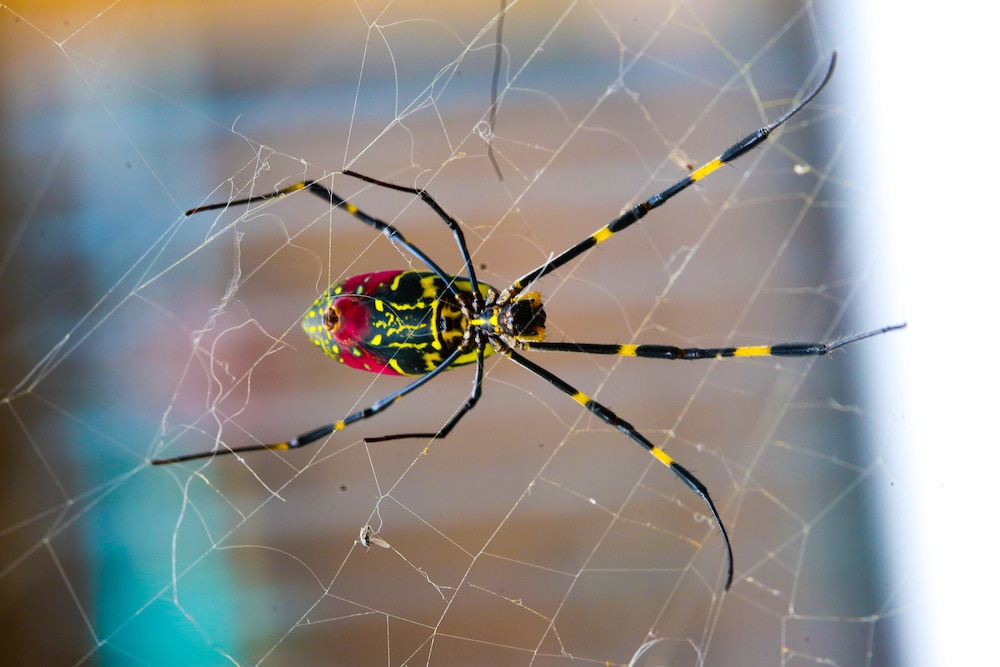Create a free profile to get unlimited access to exclusive videos, sweepstakes, and more!
Giant parachuting ‘Joro’ spiders set to invade eastern U.S. this summer
Don’t worry, say scientists — they’re harmless! Yeah, right.

Peter Parker will probably be thrilled, but the rest of us…not so much. Just when winter’s cold is loosening its grip and people start venturing outdoors for some warm-weather R&R, a plague of giant spiders is forecast to start falling from the sky across parts of the eastern United States this summer.
You read that right — falling from the sky. This arachnid apocalypse descends from above, thanks to “ballooning,” a party trick these invaders picked up somewhere along their species’ developmental timeline. Hatchlings of the Joro spider (Trichonephila clavata) take to the air using self-made parachutes, silken webs spun to catch air currents and float to whatever distant earthbound destination they’ll eventually call home.
We call it freaky, and even the people who came up with the spider’s “Joro” nickname in its native Japan must’ve agreed. Jorōgumo, the spider's storied namesake, is a creature of Japanese folk myth: a female spider that seduces and then entraps hapless paramours by shapeshifting into a beautiful woman before revealing her true nature and betraying her victims.
It’s small consolation that these spiders are huge enough that people can at least see them coming. Adult female Joros grow to a leg-span of up to 3 inches (just about the size of a mouse), and reach their full size around June each year — right after making their aerial assault and building webs in habitats that, we’re sorry to say, put them in frequent proximity to people. “The bright yellow, blue-black and red spiders’ golden webs will be all over power lines, in trees around town and even on your front porch come summer,” reports a press release from the University of Georgia, the research home of a new study on the spiders' hardiness.
These spiders can bite if they’re threatened. But they aren’t venomous, and their fangs (allegedly) aren’t big enough to cause real harm, besides some temporary pain, to humans. It looks like this could be their breakout year, though; the study compared the Joro to the golden silk spider, a similar species that invaded the southeastern U.S. 160 years ago but never spread farther, thanks to a sensitivity to cold. But unlike their more delicate cousins, the Joros’ robust metabolism and ability to withstand freezes means their habitat won’t long remain confined to Georgia’s deep-south climate.
While no one can say for sure how they set up shop in the U.S., researchers believe the spiders arrived as spindly stowaways on seabound shipping containers. Now that they’re here, “[p]eople should try to learn to live with them,” advises UGA research scientist Andy Davis, a co-author of the study. They don’t appear to disrupt the balance of native ecological systems, and despite their seriously sinister size, they pose no real threat to people… besides, that is, the threat of seriously freaking us out.


























